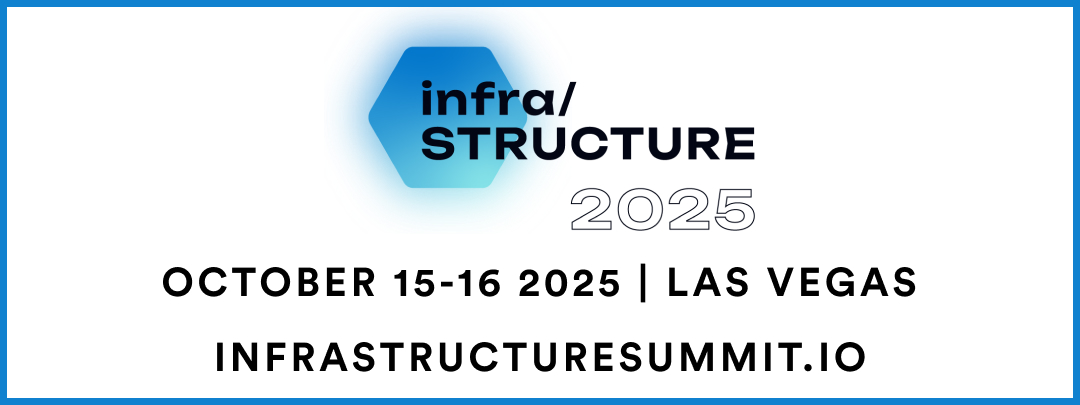WSS: More energy company disclosures, new company formation point to sector’s healthy demand profile
We continue to push through earnings season, which takes us longer given the increasing diversity across the Internet infrastructure market. Publicly listed energy companies are sharing more data points and insights on data centre and hyperscale demand, while we are also starting to track the bitcoin companies that are now reporting revenue streams from infrastructure services – whether that be GPU-based cloud infrastructure services or data centre colocation (we will pick up more of these next quarter, but the process has started). On the energy side this week, we took a closer look at the results from AES Corporation, which were driven by a significant volume of hyperscale uptake: we are talking gigawatts, not megawatts. In previous weeks, we have also tracked insights and data points from Dominion Energy and American Electric Power. As you can imagine, there are similar trend lines emerging that are moving in only one direction. And then there are chip manufacturers like NVIDIA, AMD and Intel.
In the past week, we also delved into Cloudflare’s results and they showed more hallmarks of Cloudflare’s trajectory: consistent and steady forward progress. There were a few notable takeaways from Cloudflare’s earnings. First, like many infrastructure providers over the last few years, it has seen some moderation in overall top-line growth rates, but simultaneously, gradual improvements on the bottom-line. Macroeconomic headwinds may have slowed overall demand, and it is clear that it helped create a more conservative IT buying environment., but operators did not stand still and they looked for ways to trim fat, get smarter and operate more efficiently. Cloudflare followed this blueprint and it showed in its results.
Finally, after reporting the last quarter of its fiscal year, Microsoft disclosed changes to how it will report its various revenue streams. Microsoft does not share a revenue number for Azure cloud on a standalone basis, but groups it with what it calls Intelligent Cloud. However, Microsoft does share a quarterly y/y growth percentage number. That number will now be calculated based on a different mix of products and services. The EMS (Enterprise Mobility and Security) and Power BI product lines are moving out of Azure in the new reporting structure. As a result, Microsoft’s growth rates for Azure were actually in the 31-35% y/y range over the last year and look to track at this pace going forward. The development is a good one as Microsoft is trying to share a metric that more accurately captures revenue (from an Azure cloud perspective) that is generated from infrastructure service delivery. It is a positive step forward and will have to do in lieu of more transparent cloud disclosures.
A sign of the sector’s health can always be seen in new company formation. In the GPU space, new operating companies are popping up quickly, and we have seen bitcoin companies come over from the cryptocurrency world to Internet infrastructure. Another source of new operating company formation is the real estate world. To be sure, this is not something that is new and it has been happening for some time. But the pace is accelerating as demand intensifies and the need for large volumes of land and power becomes more acute, and the process to procure it more complex, time-consuming and expensive. In the past week, we tracked a few new entrants to the sector. Panatonni Development Company comes from the industrial real estate game and hired an experienced operating executive to head up a new data centre arm, while Cloverleaf Infrastructure was founded by energy and hyperscale executives.
Cloverleaf is an interesting new entrant. It is looking to focus on the pre-development phase of data centre development, but with a sharper emphasis on energy procurement, renewables and transmission infrastructure. It does not look to be getting anywhere near the build and operating game. In that sense, Cloverleaf probably falls in the master-planned data centre category, which has split off and formed a distinct part of the landscape. Who knows, will operators like Cloverleaf split the master-planned category further, with those just focused squarely on energy infrastructure? It could be a fine line, given pre-development is so much about energy. But this one will be worth tracking and they raised $300m recently to fund development.
Speaking of the master-planned category, Chirisa Technology Parks and PowerHouse Data Centers added Blue Owl Capital and formed a JV to build data centres across multiple locations for CoreWeave, starting with a project just outside Richmond, Virginia. The JV speaks volumes to where things are going. AI is driving demand, the capital required to build is rising and collaboration across site selection, energy procurement, building and operating is critical. While as analysts, we like to think in terms of clear lines and categories, the reality is there are many blurring lines and overlap. This JV is a good case in point. Building for AI workloads to be hosted on the CoreWeave cloud is going to take that level of coordination, cooperation and partnership across various competencies.
Weaving a number of these trends together, we also took a look this past week at the partnership between Crusoe Energy and energy provider Lancium. Lancium procures large volumes of land and power, and integrates this with its proprietary power management technology. Like the master-planned model, Lancium is focused on the pre-development phase, also around power, and will partner with Crusoe for its expertise around development, construction and operations. Crusoe Energy is focused squarely on GPU-based infrastructure and AI, and has come up with a design catering to this class of workloads. This will be another project that merits close attention.
Finally, the past week week saw some hyperscale developments in Southeast Asia. AWS launched its cloud region in Malaysia as it continues to expand aggressively in SEA, while Google Cloud is reported to be looking at landing its hyperscale platform in Vietnam. Vietnam has been slow to develop so this comes maybe as a bit of a surprise, especially considering how fast the rest of the region is growing. But Google has been a bit slower to expand across the SEA region and now looks to be picking up the pace. And elsewhere in the region, we saw the acquisition of AirTrunk by Blackstone and Canadian Pension Plan Investment Board (we will have a few more details next week).
Just to review, we are now publishing our Monday summary in both our weekly Infrastructure Bulletin (free to subscribe, but a pay wall behind links) and on the Substack publishing platform. This is just our second time doing it, but it will now be a regular occurrence going forward. And if you have not heard, we are hosting an executive summit in Las Vegas on September 25-26 where we will discuss these and other pertinent topics. Hey, we might actually have some fun as well. Join us there and let us know if you have questions.
or



